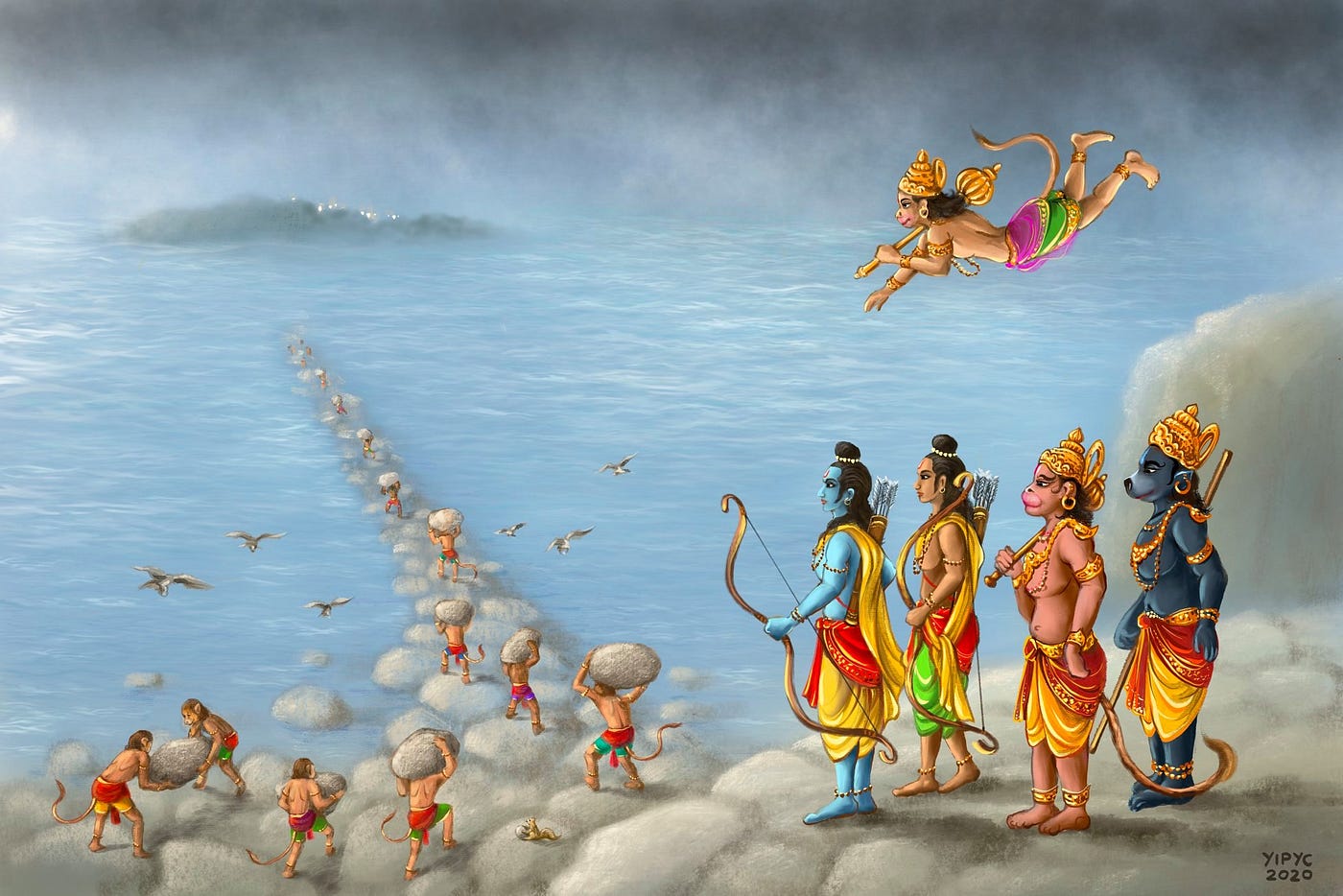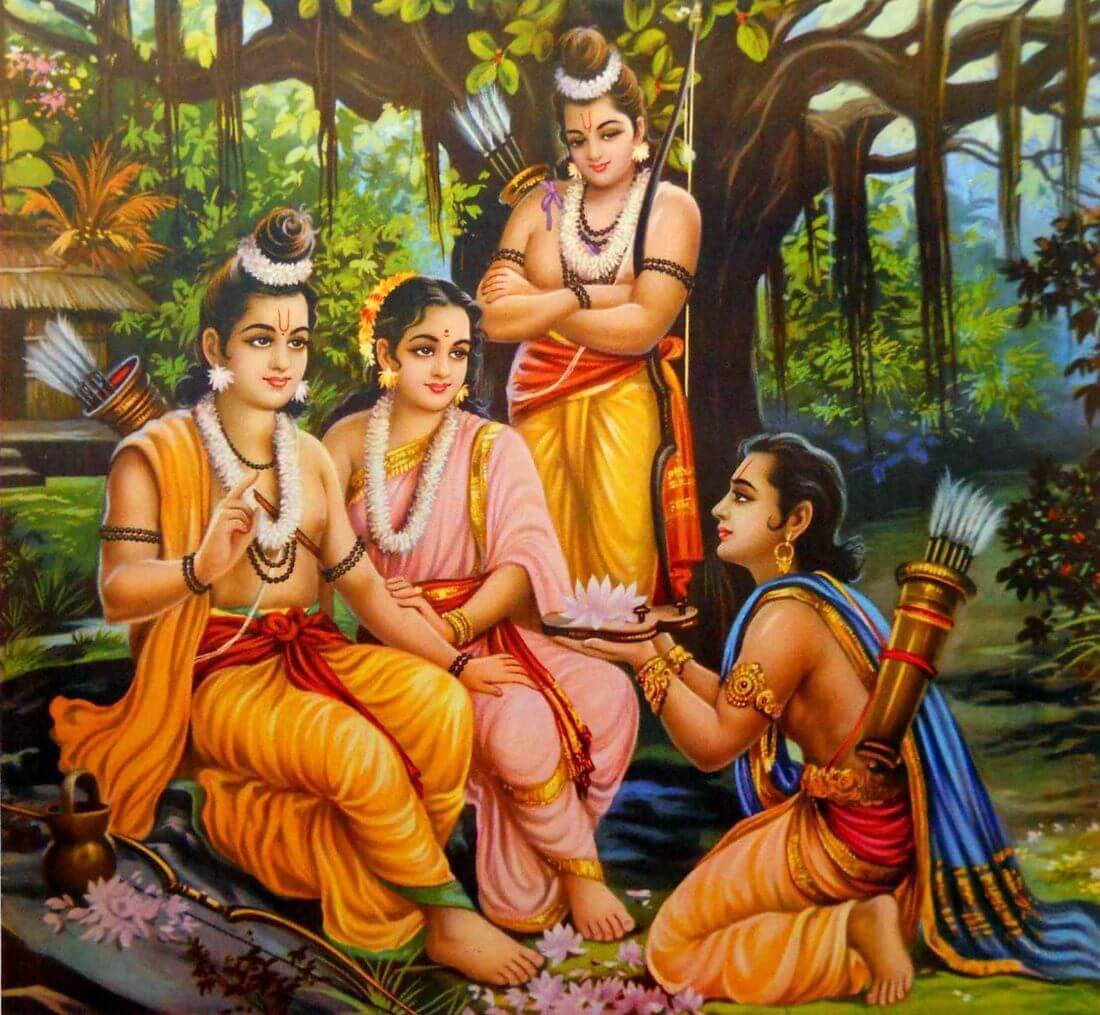RAMAYAN
“Ramyan” is a term derived from the Sanskrit word “रामायण” (Rāmāyaṇa), which is a classic epic of ancient Indian literature. The term “रामायण” can be broken down into “Rama” and “ayana,” which means “the journey of Rama.” The Ramayana narrates the life and adventures of Prince Rama, his wife Sita, and his loyal companion Hanuman, as well as his quest to rescue Sita from the demon king Ravana.

Ramayana: The Journey of Prince Rama
Introduction:
The Ramayana, attributed to the sage Valmiki, is one of the most revered epics in Hindu literature. It is divided into seven books or “Kandas,” each narrating a different phase of Lord Rama’s life. The Ramayana is not just a story but a profound exploration of dharma (righteousness), duty, and the triumph of good over evil.
Key Characters:
1. Rama: The protagonist, a prince of Ayodhya, and an incarnation of the god Vishnu.
2. Sita: Rama’s devoted wife, known for her unwavering purity and loyalty.
3. Lakshmana: Rama’s younger brother who accompanies him into exile.
4. Hanuman: A monkey deity and ardent devotee of Rama, known for his strength and loyalty.
5. Ravana: The ten-headed demon king of Lanka, who abducts Sita.
The Story Unfolds:

1. Bala Kanda (Book of Childhood):
– Birth of Rama: King Dasharatha of Ayodhya is blessed with four sons: Rama, Bharata, Lakshmana, and Shatrughna.
– Sage Vishwamitra: The sage takes Rama and Lakshmana on a journey, during which they protect the sages from demons and Rama breaks Shiva’s bow to win Sita’s hand in marriage.
2. Ayodhya Kanda (Book of Ayodhya):
– Coronation and Exile: Rama is to be crowned king, but due to a plot by Queen Kaikeyi, he is exiled for 14 years. Sita and Lakshmana join him in exile.
– Departure to the Forest: The trio leaves Ayodhya, beginning their life in the forest.
3. Aranya Kanda (Book of the Forest):
– Life in Exile: Rama, Sita, and Lakshmana live in the forest. They encounter various sages and demons.
– Abduction of Sita: The demoness Surpanakha tries to seduce Rama but is repulsed. Her brother Ravana, seeking revenge, abducts Sita.
4. Kishkindha Kanda (Book of Kishkindha):
– Alliance with Sugriva: Rama and Lakshmana meet Hanuman and the monkey king Sugriva. They form an alliance to find Sita.
– Defeat of Vali: Rama helps Sugriva reclaim his kingdom by defeating Vali, the monkey king.
5. Sundara Kanda (Book of Beauty):
– Hanuman’s Journey: Hanuman leaps across the ocean to Lanka, finds Sita, and brings back her message to Rama.
– Destruction in Lanka: Hanuman wreaks havoc in Lanka and sets the city on fire with his burning tail.
6. Yuddha Kanda (Book of War):
– The Great Battle: Rama, with the help of the monkey army, builds a bridge to Lanka. A fierce battle ensues between Rama’s forces and Ravana’s army.
– Ravana’s Defeat: Rama kills Ravana and rescues Sita. However, to prove her purity, Sita undergoes a trial by fire, which she passes unscathed.
7. Uttara Kanda (Book of Aftermath):
– Return to Ayodhya: Rama, Sita, and Lakshmana return to Ayodhya after their exile. Ram is crowned king.
– Sita’s Exile: Doubts about Sita’s chastity lead Rama to reluctantly send her into exile. Sita finds refuge in the ashram of Sage Valmiki, where she gives birth to Rama’s twin sons, Lava and Kusha.
– Rama’s Departure: After reuniting with his sons, Rama eventually ascends to the heavens, fulfilling his divine purpose.
Themes and Lessons:
1. Dharma: The Ramayana emphasizes the importance of dharma, or duty, and the moral choices that define an individual’s life.
2. Devotion and Loyalty: The epic highlights the virtues of devotion and loyalty, as seen in the characters of Sita, Lakshmana, and Hanuman.
3. Good vs. Evil: The central conflict of the Ramayana revolves around the battle between good (Rama) and evil (Ravana).
Cultural Impact:
The Ramayana has had a profound impact on Indian culture, arts, and literature. Its themes and characters are celebrate in various forms, including temple carvings, dances, plays, and television series. The epic’s moral and spiritual lessons continue to inspire millions worldwide.
Conclusion:
The Ramayana is not merely a tale of heroism and adventure but a profound exploration of the human condition and the principles that guide a righteous life. Its enduring legacy continues to shape the moral and cultural fabric of society.

Jai shree Ram 🙏
Real Estate There is definately a lot to find out about this subject. I like all the points you made